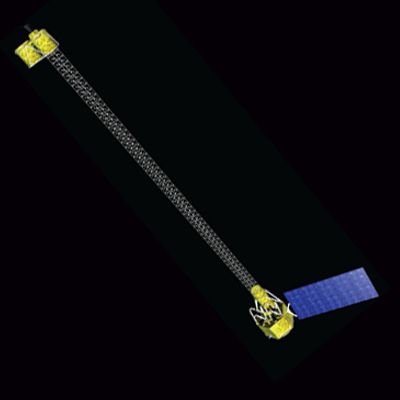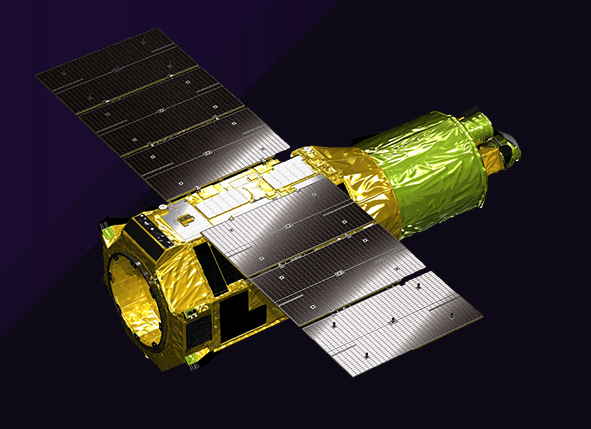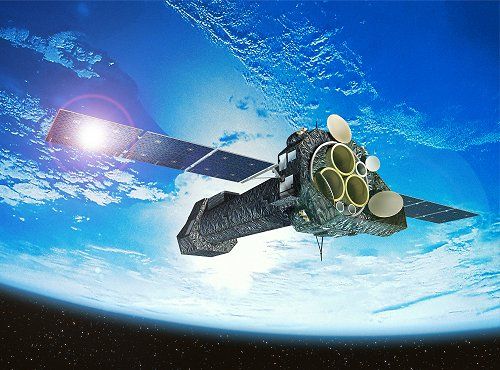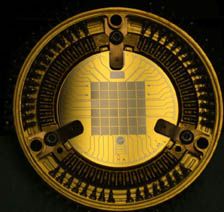Missions & Projects
Featured
Alphabetical
By Last Name:
Displaying records 1 to 8 of 8.
Show:
HaloSat (HaloSat)
HaloSat was designed to survey the distribution of hot gas in the Milky Way and constrain the mass and geometry of the Galactic halo.

High-Resolution Microcalorimeter X-ray (Micro-X)
Micro-X is a NASA-funded X-ray space telescope payload, part of NASA's sounding rocket program. We successfully flew the first Transition-Edge Sensor (TES) microcalorimeter array in space during our first flight in July, 2018. Our next flight to observe Cas-A is scheduled for September 2019. Our versatile science program includes high-resolution spectroscopy of supernova remnants and searches for dark matter in the Milky Way.

Neutron star Interior Composition ExploreR (NICER)
The Neutron star Interior Composition ExploreR (NICER) is an X-ray telescope dedicated to observe timing of neutron stars. NICER was placed on the ISS in 2017 to observe pulsars to both determine the structure of neutron stars and to demonstrate their use as deep space navigation beacons.
Key Staff
- Principal Investigator: Keith Gendreau
- Deputy Principal Investigator: Zaven Arzoumanian

Nuclear Spectroscopic Telescope Array (NuSTAR)
The NuSTAR mission will deploy the first focusing telescope for imaging the sky with high-energy X-rays. NuSTAR will undertake the first census of supermassive black holes throughout cosmic space and time, map supernova explosions, and study the most extreme active galaxies. The telescope will allow scientists to explore fundamental questions about the universe, such as what happens at the edge of a black hole, the nature of the mysterious "dark energy" pulling apart the universe, and what powered the Big Bang.

X-ray Imaging and Spectroscopy Mission (XRISM)
The X-ray Imaging and Spectroscopy Mission (XRISM) is a JAXA/NASA collaborative mission, with ESA participation. Equipped with an X-ray micro-calorimeter and X-ray CCD camera, identical to those on Hitomi, specializing in soft X-ray imaging spectroscopy. XRISM's aim is to develop the world of high resolution X-ray spectroscopy.

X-ray Multi-Mirror Mission (XMM-Newton)
The X-ray Multi-Mirror (XMM-Newton) mission is a joint project of the European Space Agency (ESA) and NASA. XMM-Newton is designed to observe high-energy X-rays emitted by exotic astronomical objects such as pulsars, black holes, and active galaxies. The observatory collects both images and spectra. This means it can measure the energy of the X-rays emitted by an astronomical object, which allows scientists to determine many of its physical characteristics. Besides having funded elements of the XMM-Newton instrument package, NASA also provides the NASA Guest Observer Facility (GOF) for XMM Newton at Goddard Space Flight Center. ESA launched the mission in December 1999.

X-ray Quantum Calorimeter (XQC)
The X-ray Quantum Calorimeter (XQC) is a broadband non-dispersive X-ray spectrometer built to study the diffuse soft X-ray background (0.05-2 keV) from a sounding rocket. The instrument is designed to differentiate among the spectral components that make up the background, including emission from the Local Bubble, our galaxy's halo, and solar wind charge exchange. The spectrometer utilizes a 36 pixel X-ray calorimeter array with 8 eV FWHM energy resolution that was designed and produced at GSFC. Each pixel in the calorimeter array is relatively large at 2mm × 2mm, and has an energy resolution at O VII Ka of better than 8 eV FWHM. The detector array is operated at 50 mK using a small adiabatic demagnetization refrigerator built at the University of Wisconsin and GSFC. The payload does not use an X-ray optic since this would significantly reduce the grasp of the experiment, but is instead collimated to a one-steradian field of view.

X-ray Spectral Fitting Package (XSPEC)
XSPEC is a command-driven, interactive, X-ray spectral-fitting program. It is designed to be completely detector-independent so that it can be used for any spectrometer.
